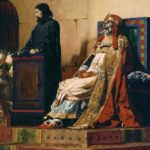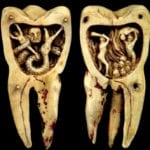 Movies and TV
Movies and TV  Movies and TV
Movies and TV  Health
Health 10 Miraculous Advances Toward Curing Incurable Diseases
 Miscellaneous
Miscellaneous 10 Undeniable Signs That People’s Views of Mushrooms Are Changing
 Animals
Animals 10 Strange Attempts to Smuggle Animals
 Travel
Travel 10 Natural Rock Formations That Will Make You Do a Double Take
 Movies and TV
Movies and TV 10 Actors Hidden in Your Favorite Movies
 Our World
Our World 10 Science Facts That Will Change How You Look at the World
 Pop Culture
Pop Culture 10 Incredible Female Comic Book Artists
 Crime
Crime 10 Terrifying Serial Killers from Centuries Ago
 Technology
Technology 10 Hilariously Over-Engineered Solutions to Simple Problems
 Movies and TV
Movies and TV 10 Movie Adaptions That Brought Popular Songs to Life
 Health
Health 10 Miraculous Advances Toward Curing Incurable Diseases
 Miscellaneous
Miscellaneous 10 Undeniable Signs That People’s Views of Mushrooms Are Changing
Who's Behind Listverse?

Jamie Frater
Head Editor
Jamie founded Listverse due to an insatiable desire to share fascinating, obscure, and bizarre facts. He has been a guest speaker on numerous national radio and television stations and is a five time published author.
More About Us Animals
Animals 10 Strange Attempts to Smuggle Animals
 Travel
Travel 10 Natural Rock Formations That Will Make You Do a Double Take
 Movies and TV
Movies and TV 10 Actors Hidden in Your Favorite Movies
 Our World
Our World 10 Science Facts That Will Change How You Look at the World
 Pop Culture
Pop Culture 10 Incredible Female Comic Book Artists
 Crime
Crime 10 Terrifying Serial Killers from Centuries Ago
 Technology
Technology 10 Hilariously Over-Engineered Solutions to Simple Problems
10 Historical Figures Remembered For The Wrong Thing
By donating a lot of money to hospitals and universities to have their names emblazoned on buildings, the wealthy can ensure that the public remembers them in a generous and shining light. But most of us don’t get to decide what our legacy will be after we’re gone.
Certain people are not remembered for their greatest accomplishments or their most infamous deeds. Rather, they are immortalized for other exploits which have become more memorable in the eyes of history for one reason or another.
10 Robert FitzRoy
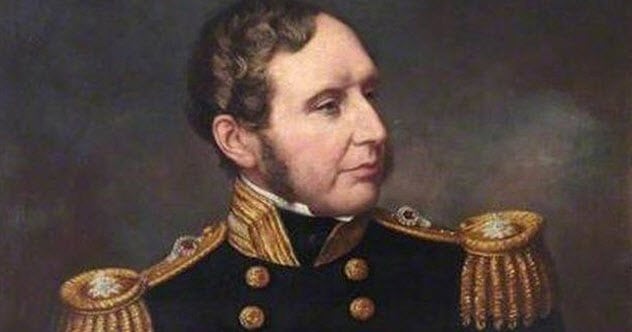
English Vice Admiral Robert FitzRoy is primarily remembered today for serving as captain of the HMS Beagle during the iconic voyage of Charles Darwin. The two became friends even though the former was a devout man who thoroughly opposed Darwin’s profane ideas. He even came up with his own peculiar hypothesis to explain the disappearance of the dinosaurs. Quirky ideas aside, FitzRoy’s main claim to fame should be inventing the weather forecast.
In 1854, FitzRoy was appointed the head of a new meteorological department within the Board of Trade whose job was to collect weather data at sea. This would be the precursor to the Met Office, the UK’s modern national weather service.
The main goal of the department was to develop better wind charts to reduce sailing times, but FitzRoy became convinced that closer study allowed them to predict storms. He finally developed the first gale warning after the Royal Charter wrecked in 1859, causing the deaths of hundreds.
FitzRoy benefited from another recent invention, the electric telegraph. It allowed him to gather weather data from all over the coasts in real time and send out warnings when needed from his London office.[1]
Since he was issuing storm warnings anyway, FitzRoy reasoned that he might as well send them to the newspapers, too. His first forecast was published in The Times on August 1, 1861.
9 Zeppo Marx
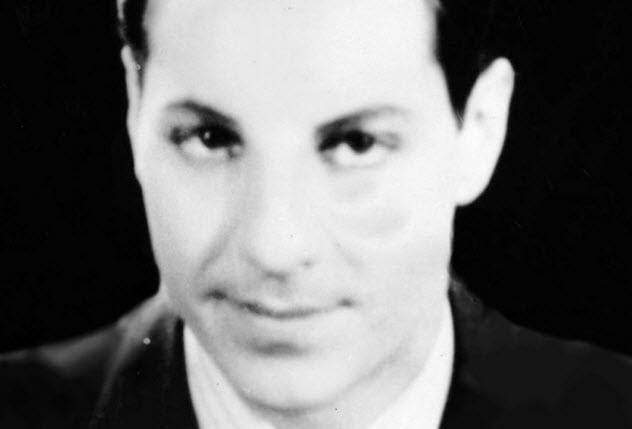
Herbert Marx, better known by his stage name “Zeppo,” was part of the Marx Brothers, one of the most successful comedy acts of early Hollywood. Alongside Gummo, Zeppo is considered one of the “other brothers,” the ones who left the act early on to focus on other projects while Groucho, Harpo, and Chico formed the definitive incarnation of the Marx Brothers.
Herbert was mechanically inclined, so he started a company called Marman Products that manufactured various machines and components. He built a short-lived motorcycle called the Marman Twin which was in production between 1948 and 1949.
During World War II, his company manufactured multiple parts for the war effort, the most notable being the Marman clamp used to secure cargo. It held the atomic bomb aboard the Enola Gay and is still being used today, even on spacecraft.
Zeppo also invented a vapor delivery heating pad, but his most useful invention was a cardiac pulse rate monitor watch.[2] It observed the wearer’s heart rate and alerted him about an irregular heartbeat.
8 William Bligh
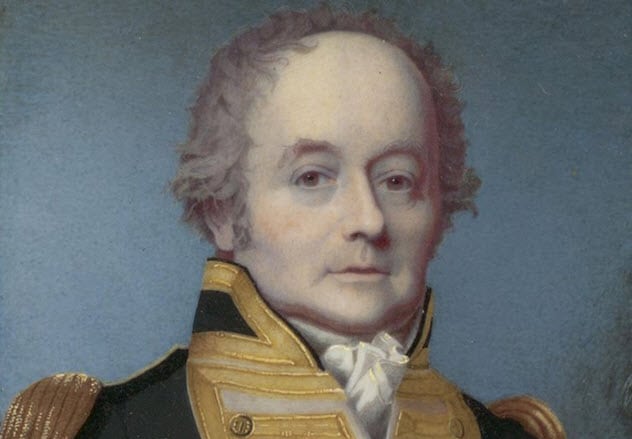
Captain William Bligh is best known for being in command of the HMS Bounty when the most famous mutiny in history occurred. The story of the Mutiny on the Bounty was popularized during the 20th century thanks to multiple films. They also solidified Bligh’s role as a tyrant while the mutiny leader, Fletcher Christian, always played the hero. More notable, however, was Bligh’s role in the Rum Rebellion, the only military coup in Australian history.
Bligh continued to have a successful career after losing the HMS Bounty and, in 1806, was appointed governor of New South Wales. At the time, a disproportionate amount of the state’s wealth and properties were under the control of the New South Wales Corps. Its officers owned a lot of businesses, represented the bulk of Sydney’s upper class, and dominated the legal system.
Furthermore, they were engaged in the private trading of goods such as rum, going against government regulation. Many historians believe a by-the-rules disciplinarian such as Bligh was purposely appointed governor in the hopes of being able to minimize their influence.
Unsurprisingly, Bligh frequently butted heads with Sydney’s entrepreneurs, especially John Macarthur. The former captain described Macarthur as the main agitator, but another prominent role was played by Major George Johnston, the commander of the New South Wales Corps.
Tensions between the two camps escalated until Bligh planned to charge several officers with treason. At that point, Johnston rallied his 400 men, went to the governor’s house, and deposed Bligh.[3] His side argued that the governor abused his power and was not fit for duty. In the end, the British government sided with Bligh and declared the Rum Rebellion illegal.
7 Barbara Cartland
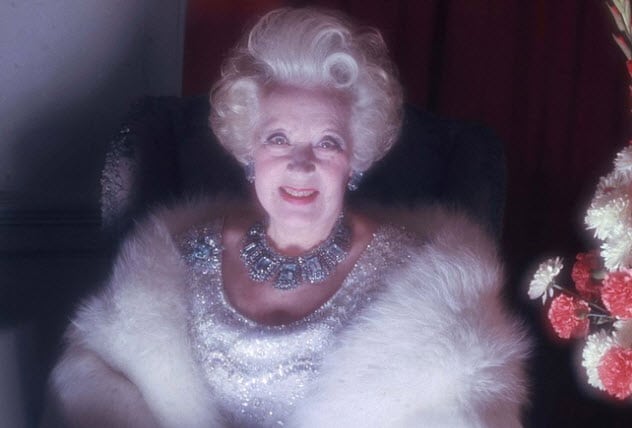
Barbara Cartland was the British novelist known for the prodigious rate at which she churned out books about Victorian romance, averaging roughly one a month. She ended her career with 723 published novels. When she wasn’t busy writing, Cartland also took an active interest in aviation and helped develop the military glider.
The author became a fan of gliders during the 1920s. She once saw a show in Germany which involved aerotowing. (A small aircraft took the glider into the air using a tow rope and sent it on short trips.) Cartland liked this, but she thought it was pointless unless it could also be used for long-distance journeys.
In 1931, she enlisted the help of two RAF officers and built her own glider named The Barbara Cartland. She embarked on a 320-kilometer (200 mi) trip. As she was carrying a bag of letters aboard, she also flew the world’s first airmail glider.
The idea of using gliders on long trips appealed to the military, who believed they could be used for troop transport into combat zones. During World War II, the British, Germans, Soviets, and Americans all employed military gliders. Cartland was honored for her contributions with the Bishop Wright Air Industry Award in 1984.[4]
6 Amelia Bloomer
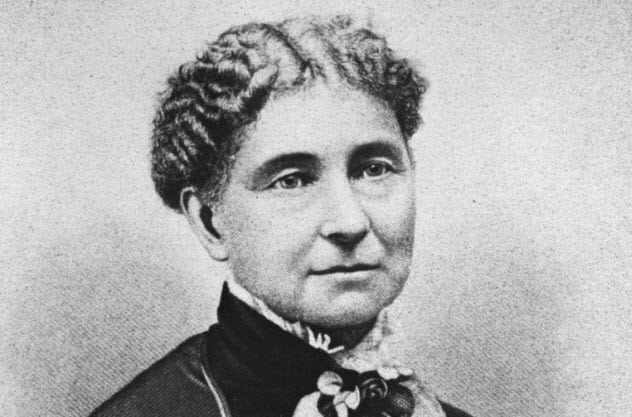
Women’s rights advocate Amelia Bloomer is forever linked to the style of dress which she helped to popularize and which bears her name. However, her efforts for women’s suffrage extend beyond a fashion statement.
Arguably, her greatest accomplishment was publishing The Lily, the first newspaper in the United States edited by and for women. Initially, it focused exclusively on promoting temperance, but it gradually came to include other women’s matters as well. The inaugural issue appeared on January 1, 1849.
The Lily was quickly followed by other periodicals edited by women. This included The Revolution, a newspaper established by suffragists Susan B. Anthony and Elizabeth Cady Stanton. They were introduced to one another by Bloomer.
She first wrote of the famous attire in an April 1851 issue of The Lily. The loose-fitting Turkish trousers combined with the skirt ending below the knee were far more practical and comfortable than the Victorian-style dresses which women were expected to wear. Interest in the new fashion was immediate. Adopters of the style became known as “Bloomerites,” while the pantaloons were called “bloomers.”
Bloomer actually only wore the fashion named after her for a few years before returning to the old style.[5] She felt that people became too fixated on the dress, and it detracted attention from more important topics.
5 Epicurus
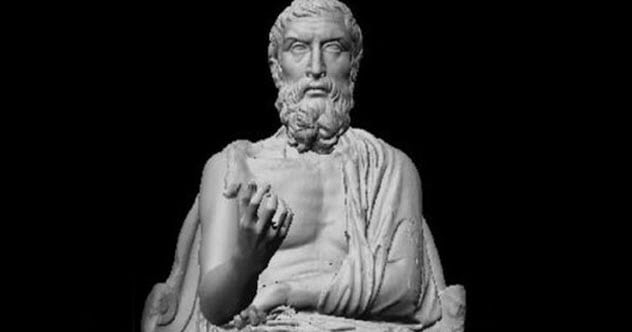
Merriam-Webster defines an “epicure” as one with sensitive and discriminating tastes, especially in food and wine. The word is based on Epicurus, the Greek philosopher who devised a new hedonistic philosophy called Epicureanism. At first, it seems like a fitting way to honor the ancient scholar, except that it goes against what Epicurus actually believed in.
Hedonism is a school of thought that argues that the pursuit of pleasure and intrinsic goods should be the main goals in life. Strictly speaking, Epicurus was a hedonist as he believed that pleasure was the greatest good. But his idea of pleasure was starkly different from modern epicures.
Epicurus had no interest in sumptuous feasts or expensive possessions. He believed that the highest state of happiness was achieved through a combination of ataraxia and aponia. The former means a state of tranquility free of fear and distress, while the latter refers to the absence of pain.[6]
Epicurus advocated that happiness came from a reduction in desires. He specifically categorized luxury food as a natural but unnecessary desire. In other words, one shouldn’t spurn this extravagance if it happens to be available, but one should not seek it out. Doing so will lead to unhappiness by creating anxiety in anticipation of fulfilling the desire and pain when it becomes unfulfilled.
4 John Montagu, Earl Of Sandwich
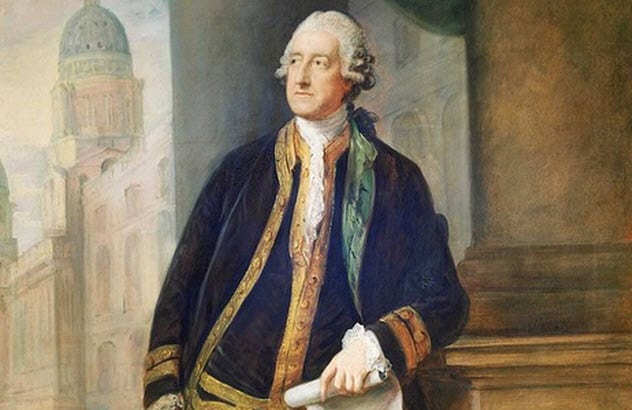
The name John Montagu probably won’t ring a bell with many people, but they might recognize him from his title, Earl of Sandwich. He is the man who gave the name to the most popular, versatile food in the world—the sandwich.
According to the story, Montagu was an avid gambler and wanted a food that he could eat without leaving the card table. His buddies soon started asking for “the same as Sandwich” which just became a sandwich eventually. According to a more complimentary version, Montagu was such a hard worker that he wanted something he could eat at his desk in his office.
The biggest position held by Montagu in his career was First Lord of the Admiralty. He had the post from 1748 to 1751, in 1763, and from 1771 to 1782. His final stint wasn’t considered particularly successful, especially due to his administration during the American Revolutionary War. He did do something worthwhile, though, and that was sponsoring the voyages of James Cook.
When Montagu was put in charge of the navy, Cook had just finished his first voyage to Australia. He was commissioned for another trip, and the Earl of Sandwich gave him the HMS Resolution, a sloop that Cook described as “the fittest for service of any I have seen.”
He used it on his next two voyages. In 1778, Cook became the first European to discover the Hawaiian Islands, which he initially named the Sandwich Islands in honor of his patron.[7]
3 Elisha Gray
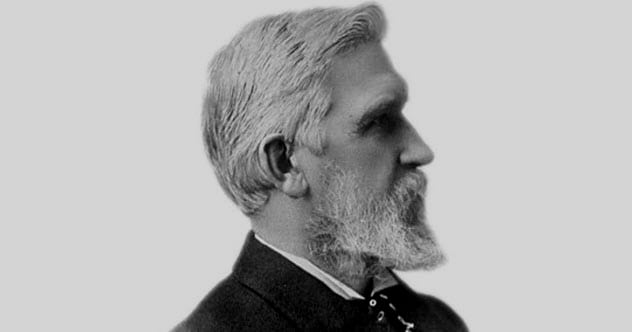
The story of Elisha Gray is fairly well-known. Both he and Alexander Graham Bell invented telephone prototypes around the same time, but Bell beat him to the patent office by a matter of hours. In another version, Bell actually stole the usage of liquid transmitters for his telephone design from Gray by illegally looking at his patent application.
The two went to court. Bell won, and Elisha Gray became one of the prominent examples of people getting screwed out of the history books. However, Gray’s story did not end there. He continued inventing and had around 70 patents by the time he died in 1901. He also founded the Western Electric Manufacturing Company, which lives on today as the Fortune 500 corporation Graybar.
As an inventor, Gray mostly kept working on improving the telegraph. One creation of note was the telautograph, which was a precursor to the fax machine.[8] The receiving station had a pen attached to servos which could reproduce whatever the sender was writing at the other end. It could be used to transmit a signature, a letter, or even a drawing and quickly became popular in banks, hospitals, and railway stations.
2 Victor Noir
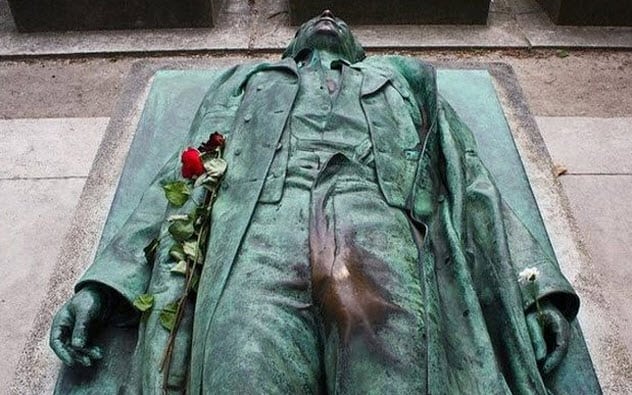
Three-and-a-half-million people go to see the famed Pere Lachaise Cemetery in Paris every year. One of the most visited tombs is that of French journalist Victor Noir, who was gunned down by Prince Pierre-Napoleon Bonaparte in 1870. However, most tourists are only interested in one thing—rubbing the genitals of Victor Noir.
Here’s what happened.
Noir found himself embroiled in a feud between Prince Bonaparte and Henri Rochefort, the owner of the newspaper for which Noir worked. Eventually, the prince challenged Rochefort to a duel. Paschal Grousset, the paper’s editor, sent Noir and another man named Ulrich de Fonvielle as his seconds to set the terms of a duel between the prince and Grousset.
But the prince only wanted to duel with Rochefort, a fellow nobleman. An argument between Noir and the prince escalated into a fight, and Bonaparte gunned down Noir. Whether the prince or the journalist hit first is a matter of whose story you believe.
Noir’s death and Bonaparte’s subsequent acquittal enraged the populace at a time when the imperial family wasn’t too popular to begin with. Noir’s martyrdom gave revolutionaries the opportunity they needed to lead an uprising. Although the insurrection failed, the empire didn’t survive for long. The Franco-Prussian War led to the emergence of the Third Republic later that year.
After the establishment of the republic, Victor Noir’s remains were moved to Pere Lachaise Cemetery where sculptor Jules Dalou created a bronze statue for Noir’s grave. For some reason, Dalou gave Noir’s effigy a generous protuberance down his pants. It soon became a tradition for female visitors to kiss the sculpture on the lips and rub its genitals to improve the women’s sex lives.[9]
1 George Washington Carver
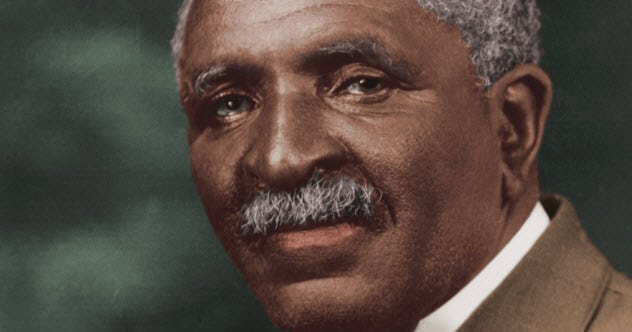
In 1941, Time magazine called George Washington Carver the “Black Leonardo.” Although he was born into a slave family, Carver became one of the country’s leading experts on agriculture, even serving as adviser to multiple US presidents. Despite all this, he is remembered as the “peanut butter guy.”
This not only grossly trivializes his efforts, it’s not even accurate. Carver did develop hundreds of new uses for peanuts, but peanut butter wasn’t among them. The Aztecs made peanut paste centuries before him. Even in modern times, patents already existed for various methods of preparing the comestible.
Carver’s main contributions involved easing the plight of the American farmer. Cotton was the primary crop in the South, but it was a demanding crop with high nutrient needs. It often left the soil poor and, consequently, resulted in worse yields the following years.
Carver encouraged farmers to rotate their crops and alternate cotton with soil-enriching plants, which was cheaper and more effective than fertilization. He tested the soil to see what would grow best in the region and primarily recommended peanuts and sweet potatoes.[10]
Of course, this posed a new problem: What would the farmers do with all those peanuts and sweet potatoes as they weren’t widely consumed? Carver started developing hundreds of new uses for “undesirable” crops and turned the peanut into one of the nation’s leading crops.
Read more strange facts about historical figures on 10 Historical Figures You Didn’t Know Were Assholes and 10 Strange Facts About Historical Figures.

